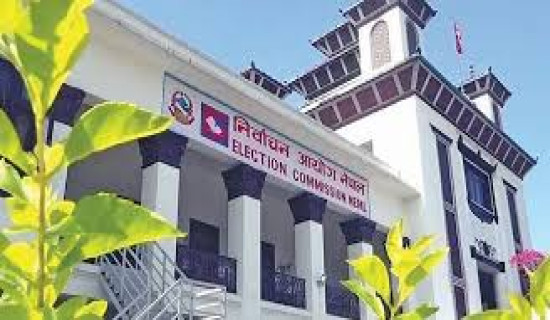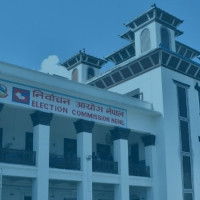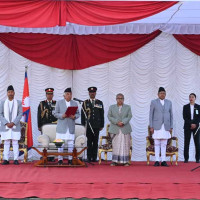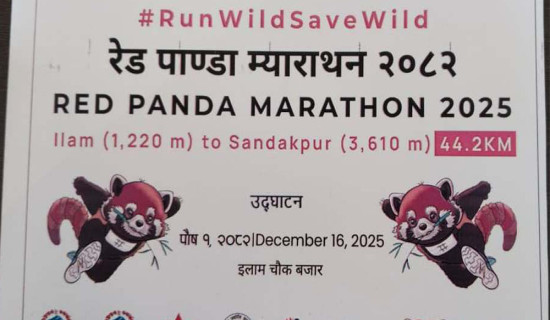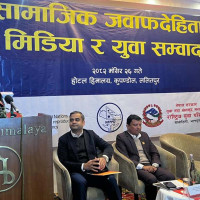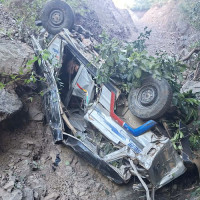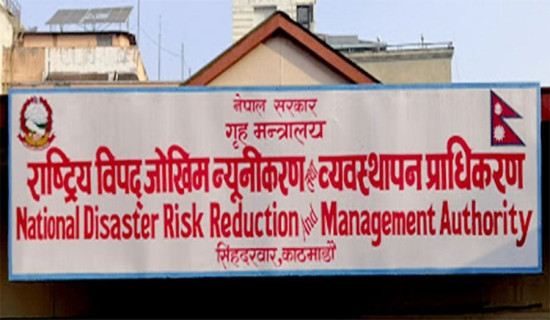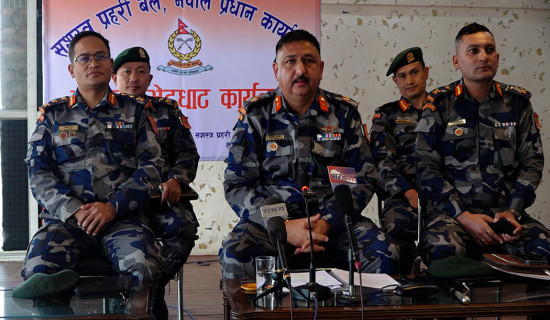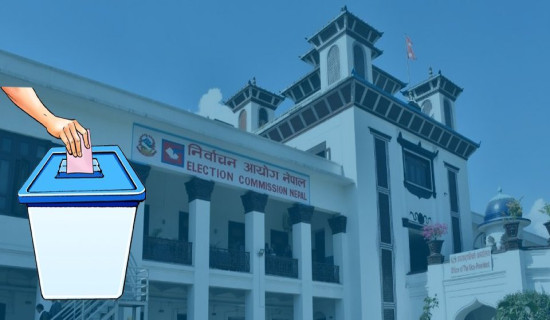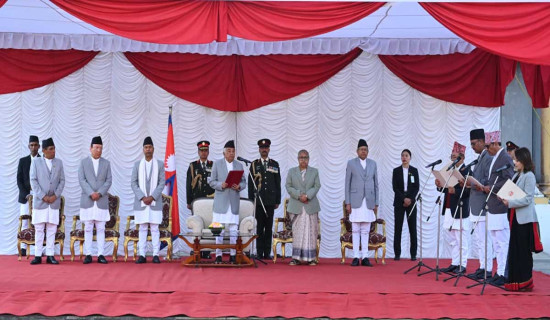- Friday, 12 December 2025
Taking Lessons The Hard Way
The Gen Z protest on September 8 and 9 not only destroyed the organisational structures of major political parties in Nepal, but it also dismantled their moral and ethical foundation. As the parties try to locate their foothold after being swept off balance by the Gen Z's revolt, political analysts are wondering why these forces, once considered to have a wide support base, crumbled within 48 hours of the protest. What is more intriguing is that though these parties were touted to command a near two-thirds majority in the parliament, they melted like a cube of butter in a hot pan.
For those unfamiliar with the dynamics of the rise and expansion of these parties, their subsequent fall may seem unbelievable. But for those who were updated with their development trajectories, what happened was not unexpected. Adequate early warnings were being raised by both neutral analysts and rank-and-file party workers about the possible disaster, citing the absence of inner-party democracy and growing authoritarianism in party leadership. But the parties ignored the signals, blinded as they were by their hubris.
Popular
Before the protest, the political parties were considered the symbols of socio-economic transformation and harbingers of democracy. In Nepal's context, parties came into existence when the absolute monarchy was riding roughshod over the people; they were banned and people's right to expression and human rights were restricted. Internationally, democratic and national independence movements were at their high tide. The Nepali people had, therefore, accepted these parties as popular institutions whose ideas, programmes and agendas resonated with the masses desperate to see change in their situation.
From 1990 onward, political parties remained unchallenged, with an overwhelming majority of people supporting their policies and programmes. In the early years of the post-1990 era, the country saw momentum in local infrastructure building, service delivery and social security. However, when even the first elected government failed to complete its five-year term, political instability ensued in the country, dashing the popular hope for rapid economic development. Instead of concentrating on socio-economic transformation, political parties further destabilised the situation with their obsession with making or breaking alliances and amassing wealth through corruption.
The multiparty democracy was established with the support and sacrifice of thousands of party workers who had played a significant role in mobilising the masses around the agendas of the parties. But the political parties never implemented the programmes they had laid down in their election manifestos. The post-1990 multiparty system gave way to federal republicanism through the promulgation of the Constitution of Nepal 1915. Instead of focusing on programmes of economic prosperity, political parties channeled their resources and organizational networks to turn the election result to their favour.
Dissenting voices among the party workers were suppressed, and party leaders who dared to compete for leadership positions were suspended or expelled from the party, encouraging total compliance and subservience. If we review the histories of the parties, we find them mired in bitter inner-party struggles and contests of dissenting ideas within all three major parties. We also see that instead of widening the democratic base, the three major parties were run by cronies bound together by vested interests and shared access to opportunities. Ideologically conscious, educated and critical-minded party workers were systematically sidelined to make way for uneducated, ideologically bankrupt, selfish and opportunist individuals.
Whenever a major polemic erupted in the ideological realm, tens of thousands of party leaders and active cadres were expelled or sidelined from the party, creating a deep vacuum of critical thinking in party hierarchies. The central leadership, made up of a handful of political speculators, became more and more disconnected with the lower party leaders and workers while co-opting corrupt, unethical and ideological empty vessels onto the party committees. Concurrently, deliberate attempts were also made to deify the highest party leader.
This culture of hero worship was manifest in all the political parties but the UML surpassed all other parties in glorifying its leader, KP Oli, projecting him as extraordinarily visionary, infallible and indispensable. Coteries around him resorted to Byzantine flattery, calling him the most outstanding statesman of South Asia, even comparing him with Xi Jinping and Vladimir Putin.
Flippant policy message
The parties in power did not show acumen in managing foreign relations as well. Frequent appointments and recall of ambassadors sent a flippant policy message to friendly countries. Instead of grooming their own diplomats and IR experts, parties in power posted retired bureaucrats to diplomatic destinations. Party leaders were disconnected from the youths and were unaware of their aspirations. Their intelligence agencies were totally dysfunctional, making the government leadership completely unable to read the room.
Naturally, when the youths came to the street, the parties were uninformed of the scale of the protest and unprepared for the required resistance. They believed that the protest would dissolve like a water bubble at the first encounter with the force of the state. But there was more to it than meets the eye. Political parties hardly realised that behind the façade of Gen Z's street protest, there were shadowy geopolitical interests at play. The parties have lost because of their over-reliance on the sagacity of an individual leader, ignoring the wisdom of the collective. The lesson learned for them is that democratic institutions can be dysfunctional if they do not foster inner-party democracy and entertain critical ideas.
(Dr. Bharadwaj is a former ambassador and former chairperson of Gorkhapatra Corporation. bharadwajnarad@gmail.com)



